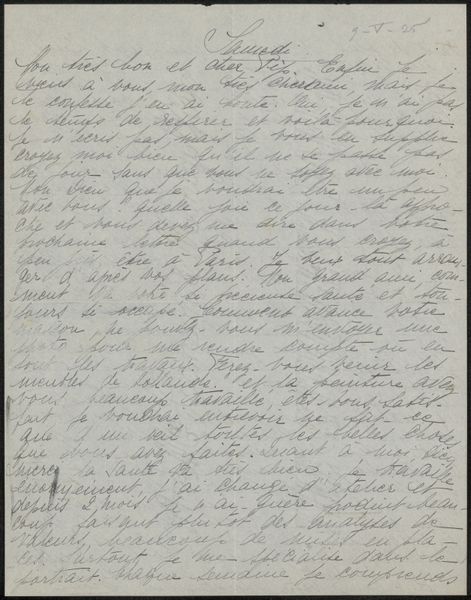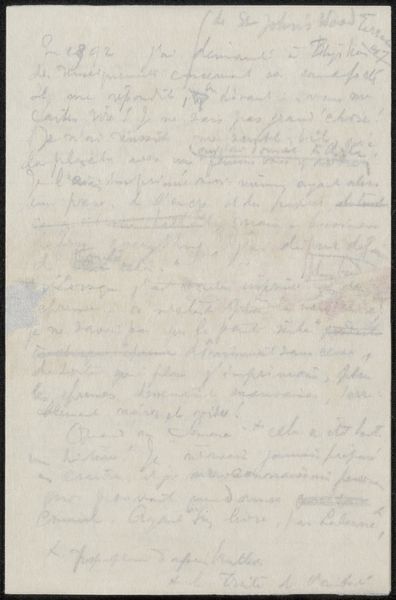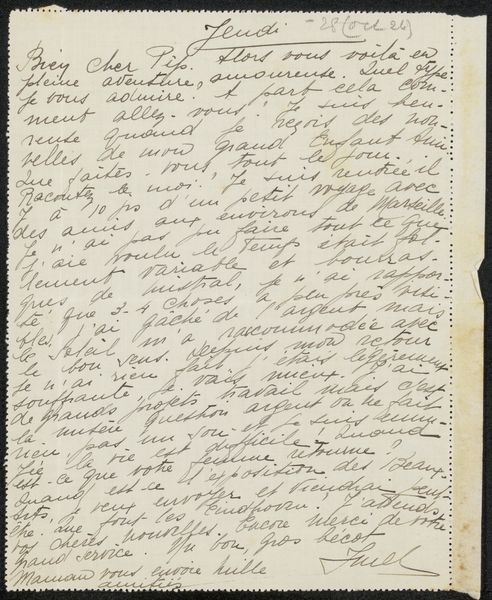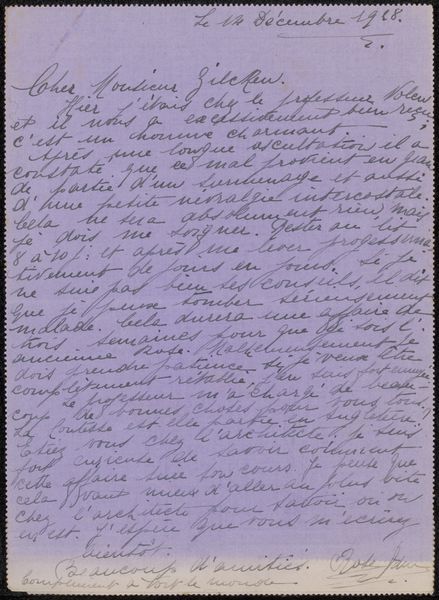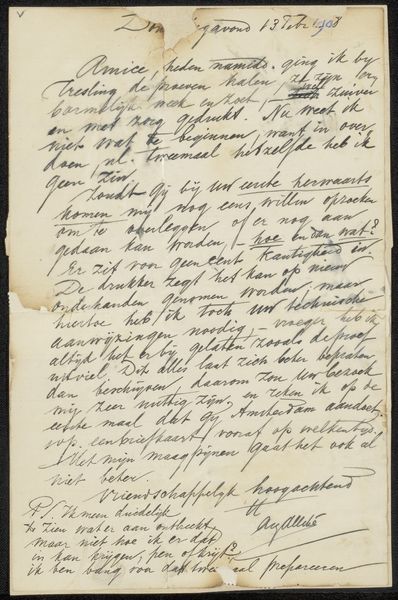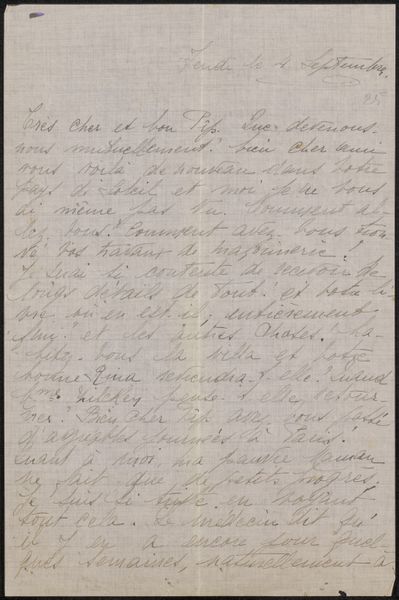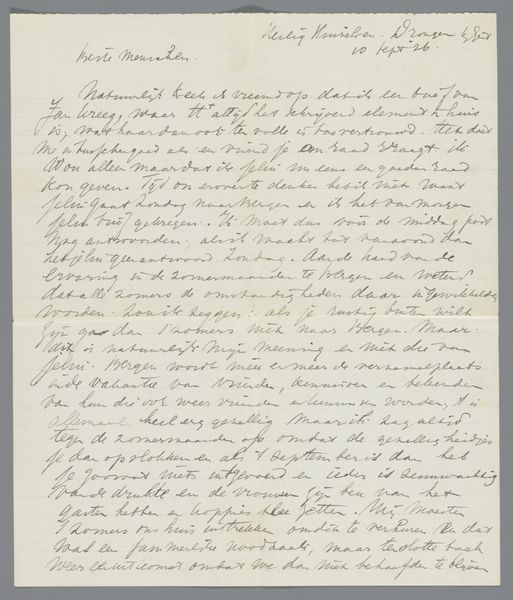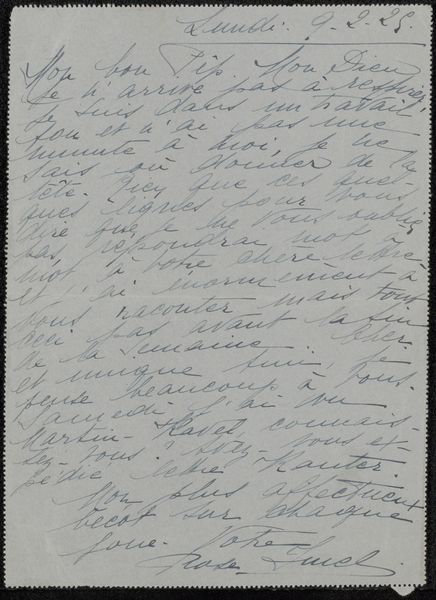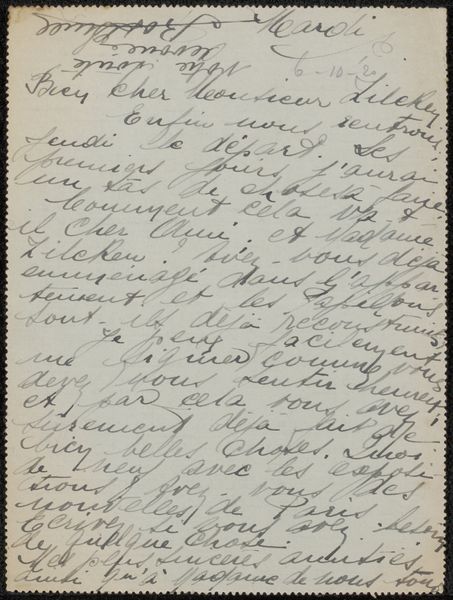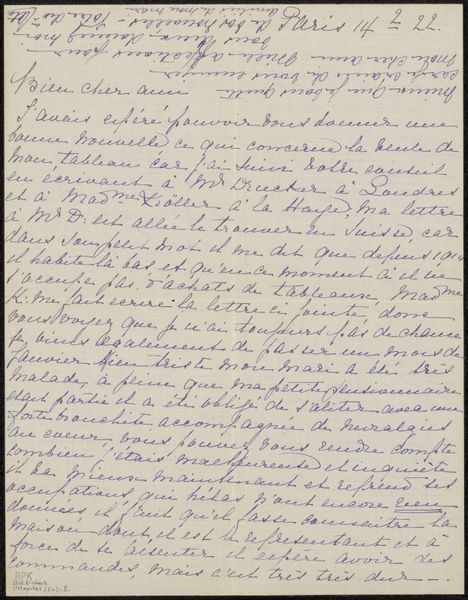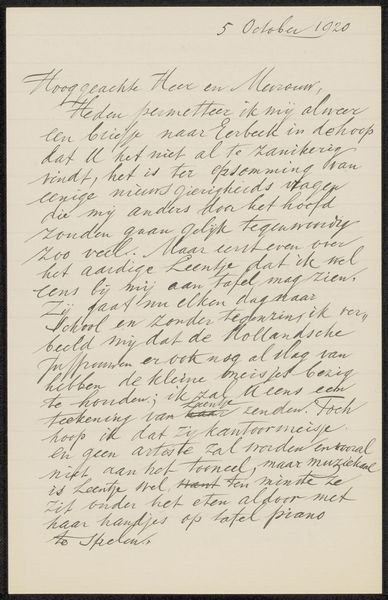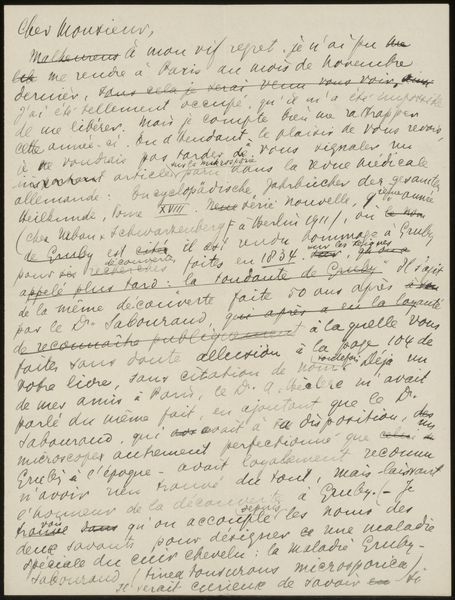
drawing, paper, ink, pen
#
drawing
#
hand-lettering
#
hand drawn type
#
hand lettering
#
paper
#
text
#
ink
#
pen work
#
sketchbook drawing
#
pen
#
calligraphy
Copyright: Rijks Museum: Open Domain
Curator: We’re looking at “Brief aan Philip Zilcken,” a drawing, possibly from 1927. It seems Rose Imel created it with pen and ink on paper. Editor: It feels so intimate, doesn't it? A personal correspondence frozen in time. The dense script makes it feel weighty, like secrets are carefully guarded within those swirling lines. Curator: Indeed. The use of calligraphy, verging on what some might term “hand drawn type,” suggests a formal yet expressive intention. Consider the interplay between the rigid structure of the lines and the almost frenetic energy of the handwriting. Editor: From a historical viewpoint, handwriting like this indicates a certain societal positioning; literacy, education… but then also consider the intimacy it allows versus a typed letter. A slower means of connection during its time, burdened by slower delivery systems too. How the very act of sending shaped the intent! Curator: Precisely! The pen work itself becomes a significant component. Look at the varying line weights, the flourishes, the subtle shading. These visual elements create a rhythm, a textural depth that moves beyond mere communication. The materials used lend texture. The choice to pen, the selection of ink contribute. Editor: Right. As a found or kept missive it creates curiosity. The aesthetic draws you to decipher the intent; while social historians are driven by this context of communication, the recipient, any historical implications related to its content—assuming, of course, one is privy to the specifics in full. What impact could this simple note have had? What secrets do these elegant squiggles hide? Curator: The form itself invites deeper contemplation about process and production—its structural beauty speaks of both intention and accident. I believe it offers valuable insight regardless. Editor: Perhaps what compels most, even beyond history, is just humanity, captured right there on paper.
Comments
No comments
Be the first to comment and join the conversation on the ultimate creative platform.
